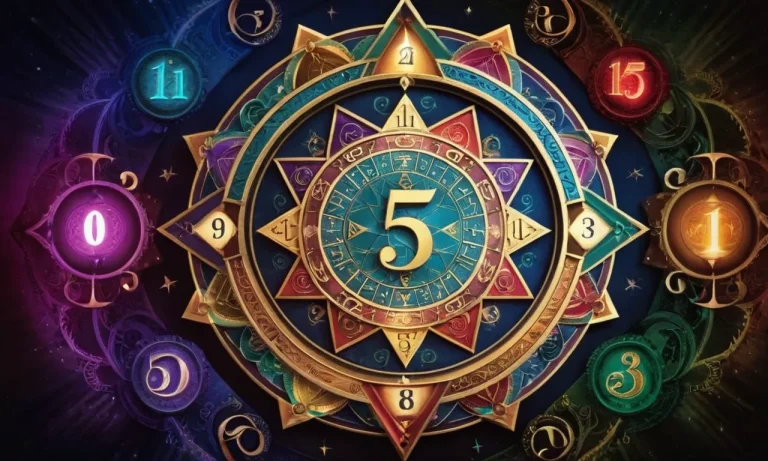Black And White Swan Meaning: Symbolism, Mythology, And Spiritual Significance
In the realm of symbolism, the swan has long been revered as a graceful and majestic creature, captivating the imagination of cultures across the globe. Among the various hues that adorn these elegant birds, the black and white swans hold a particularly intriguing and multifaceted significance.
If you’re short on time, here’s a quick answer to your question: The black swan symbolizes the rare, the unexpected, and the transformative, while the white swan represents purity, grace, and spiritual enlightenment.
Together, they embody the duality of life, the known and the unknown, and the journey towards self-discovery.
In this comprehensive article, we will delve into the rich symbolism and mythology surrounding black and white swans, exploring their cultural significance, spiritual connotations, and the profound lessons they offer.
From ancient folklore to modern interpretations, we will unravel the intricate tapestry of meanings woven into these captivating creatures.
The Black Swan: Embracing the Unexpected
The Metaphor of the Black Swan Event
The term “black swan” has become a metaphor for an unpredictable and unprecedented event that has a profound impact on society. Coined by Nassim Nicholas Taleb in his book “The Black Swan: The Impact of the Highly Improbable,” the black swan theory challenges the notion that all events are predictable based on past experiences.
Instead, it embraces the idea that some events are so rare and unexpected that they defy our expectations and assumptions.
A black swan event possesses three key characteristics: it is an outlier, as it lies outside the realm of regular expectations; it carries an extreme impact; and, despite its significance, human nature makes us concoct explanations for its occurrence after the fact, making it explainable and predictable. Examples of black swan events include the 9/11 terrorist attacks, the 2008 global financial crisis, and the COVID-19 pandemic, all of which had far-reaching consequences that were difficult to foresee.
Transformation and Rebirth
In the realm of symbolism, the black swan represents transformation and rebirth. According to ancient mythology, the swan was believed to be a symbol of transformation and the ability to navigate between the realms of the physical and spiritual worlds.
The black swan, in particular, symbolizes the emergence of something new and unexpected from the depths of the unknown.
This symbolism resonates with the concept of embracing the unexpected and using it as a catalyst for personal growth and transformation. Just as a black swan event can disrupt the status quo and challenge our assumptions, it can also present opportunities for us to adapt, evolve, and embrace new perspectives and ways of being. By embracing the unexpected and being open to change, we can unlock our potential for transformation and rebirth, emerging stronger and wiser on the other side.
Overcoming Challenges and Adversity
The black swan also serves as a powerful symbol of overcoming challenges and adversity. In many cultures, the swan is associated with grace, strength, and resilience. The black swan, in particular, represents the ability to navigate through dark and turbulent times, emerging victorious and transformed.
When faced with a black swan event or unexpected challenge, we are forced to confront our fears, doubts, and limitations. However, by embracing the unexpected and drawing upon our inner strength and resilience, we can overcome these obstacles and emerge stronger and more resilient.
The black swan reminds us that adversity is not a permanent state but rather an opportunity for growth and transformation. By embracing the lessons and insights that arise from unexpected events, we can cultivate a greater sense of resilience and adaptability, allowing us to navigate life’s challenges with grace and fortitude.
The White Swan: Embodiment of Purity and Grace
Symbolism of Innocence and Virtue
The white swan, with its pristine plumage and graceful movements, has long been revered as a symbol of innocence and virtue. Its pure white color is often associated with purity, chastity, and spiritual cleanliness.
In many cultures, the white swan is seen as a representation of the soul’s journey towards enlightenment, untainted by the corruptions of the material world. According to Ancient Symbols, the white swan’s symbolism of innocence and virtue can be traced back to Greek mythology, where it was associated with the goddess Aphrodite, the embodiment of love and beauty.
Spiritual Enlightenment and Transcendence
Beyond its symbolism of innocence, the white swan is also deeply connected to spiritual enlightenment and transcendence. Its ability to glide effortlessly across the water’s surface is often seen as a metaphor for the soul’s journey towards higher realms of consciousness.
In many spiritual traditions, the white swan represents the attainment of inner peace, self-realization, and the ability to rise above the mundane concerns of the material world. According to Learn Religions, in Hinduism, the white swan is associated with the concept of “Hamsa,” which represents the journey of the individual soul towards spiritual liberation and union with the divine.
Elegance and Refinement in Nature
The white swan is not only a symbol of spiritual purity but also a representation of elegance and refinement in nature. Its graceful movements, elongated neck, and pristine feathers have captivated artists, poets, and nature lovers for centuries.
The swan’s ability to maintain its regal composure, even in the face of adversity, has made it a popular subject in art and literature. According to a study by the Royal Society for the Protection of Birds (RSPB), the white swan is one of the most recognizable and beloved bird species in the world, with over 80% of people surveyed expressing a positive emotional response towards these majestic creatures.
😍
Black and White Swans in Mythology and Folklore
Greek and Roman Legends
In Greek mythology, swans were closely associated with Apollo, the god of light, music, and poetry. According to legends, a flock of swans surrounded the island of Delos, where Apollo was born, and sang in celebration. The swan was considered a sacred bird and a symbol of beauty, grace, and purity.
In Roman mythology, the swan was sacred to Venus, the goddess of love and beauty. It was believed that upon death, poets and musicians were transformed into swans, which is why the swan’s song is a metaphor for a final, brilliant performance or masterpiece.
The black swan, on the other hand, was seen as a rare and ominous occurrence, symbolizing the unknown and unexpected.
Native American Traditions
In many Native American cultures, swans held a significant place in their folklore and spiritual beliefs. For the Lakota people, the swan was a symbol of grace, purity, and spiritual enlightenment. They believed that the white swan represented the journey of the soul towards the afterlife.
The black swan, however, was seen as a harbinger of change and transformation. According to Native American Roots, the black swan signified the end of one cycle and the beginning of another, encouraging people to embrace change and adapt to new circumstances.
Celtic and Norse Symbolism
In Celtic mythology, swans were revered as symbols of love, beauty, and fidelity. It was believed that swans mated for life, and their loyalty to their partners was admired. The white swan was often associated with the goddess Brighid, who represented fertility, healing, and poetry.
In Norse mythology, the swan was a sacred bird linked to the goddess Freya, the embodiment of love, beauty, and fertility. Swans were thought to be the incarnation of fallen warriors, and their feathers were used in rituals and ceremonies.
The black swan, while rare, was seen as a powerful omen, representing the unknown and the mysteries of the universe.
Across various cultures and mythologies, the symbolism of black and white swans has captivated the human imagination for centuries. While the white swan is often associated with purity, grace, and beauty, the black swan represents the unexpected, the unknown, and the transformative power of change.
These contrasting symbols serve as reminders of the duality and complexity of the natural world and the human experience, inviting us to embrace both the familiar and the unfamiliar with an open mind and heart.
Whether revered as sacred creatures or embodiments of profound spiritual truths, the black and white swan continue to hold a special place in our collective consciousness, inspiring awe, wonder, and reverence for the mysteries of life.
Spiritual Significance and Interpretations
Yin and Yang: The Balance of Opposites
In many spiritual traditions, black and white swans are seen as embodiments of the yin and yang principles, representing the balance of opposites that permeates the universe. The black swan, with its dark feathers, symbolizes the yin energy – the feminine, receptive, and introspective aspects of life.
Conversely, the white swan represents the yang energy – the masculine, active, and outward-facing qualities. Together, they form a harmonious duality, reminding us that true balance can only be achieved by embracing both the light and dark aspects within ourselves and in nature.
According to Learn Religions, an authoritative website on spiritual beliefs, “The yin and yang philosophy suggests that all things exist as inseparable and contradictory opposites, with the supreme goal being to achieve a harmonious balance between the two.”
This ancient concept is deeply ingrained in many Eastern philosophies, including Taoism, Buddhism, and Confucianism.
Animal Totems and Spirit Guides
In various indigenous and shamanic traditions, swans – both black and white – are revered as powerful animal totems and spirit guides. These majestic creatures are often associated with grace, beauty, and the ability to navigate the realms of the seen and unseen.
They are believed to possess the power to guide souls through transitions, whether it’s the journey of life, death, or spiritual transformation.
For example, in Celtic mythology, the white swan is a symbol of the soul’s journey and is often depicted as a guide leading souls to the Otherworld. Conversely, the black swan is sometimes seen as a guardian of the underworld, representing the mysteries of death and rebirth.
By embracing the wisdom of these avian spirit guides, we can gain insight into our own inner landscapes and find the courage to navigate life’s challenges with grace and resilience.
Symbolism in Dreams and Visions
The appearance of black and white swans in dreams and visions is often considered highly symbolic and meaningful. In dream interpretation, a white swan may represent purity, grace, and spiritual enlightenment, while a black swan can symbolize the unknown, the unconscious, or hidden aspects of ourselves that need to be explored.
According to DreamCatcher.net, a respected dream interpretation website, “Seeing a white swan in your dream can be a sign of new beginnings, spiritual awakening, or a period of peace and tranquility in your life.”
On the other hand, a black swan dream may be a call to “confront your fears and embrace the unknown aspects of your life or psyche.”
Whether encountered in dreams, visions, or waking life, the symbolism of black and white swans invites us to embrace the duality within ourselves and the world around us. By understanding their spiritual significance, we can gain a deeper appreciation for the balance and harmony that exists in all things.
😊
Black and White Swans in Art and Literature
Artistic Representations and Interpretations
The striking contrast between the black and white swans has captivated artists for centuries, inspiring them to depict these majestic creatures in various forms of art. From Renaissance paintings to modern sculptures, the black and white swan symbolism has been widely explored, often representing duality, balance, and the coexistence of opposites.
One of the most iconic artistic representations of black and white swans can be found in the works of the Dutch master Jan Asselijn. His paintings, such as “The Threatened Swan,” showcase the graceful beauty of these birds while also hinting at their symbolic significance.
Similarly, contemporary artists like Angie Hooker have created stunning sculptures that capture the elegance and power of black and white swans, often using them as metaphors for life’s contradictions.
Literary Symbolism and Metaphors
In literature, the black and white swan symbolism has been woven into countless stories, poems, and metaphors. From ancient Greek myths to modern novels, these birds have represented a wide range of themes, including love, purity, transformation, and the duality of human nature.
One of the most famous literary references to black swans is found in W.B. Yeats’ poem “The Wild Swans at Coole. “ In this work, the swans symbolize the timeless beauty of nature and the fleeting nature of human life.
Similarly, Hans Christian Andersen’s “The Wild Swans” uses the transformation of princes into swans as a metaphor for the power of love and sacrifice.
Cultural Influences and Inspirations
The black and white swan symbolism has also found its way into various cultural traditions and beliefs around the world. In Celtic mythology, the swan was associated with the goddess Brighid, representing grace, beauty, and the feminine divine.
In ancient Greece, swans were sacred to Apollo, the god of poetry and music, and were believed to sing a beautiful song before their death.
In modern times, the black swan has become a popular symbol in fields like finance and risk management, thanks to Nassim Nicholas Taleb’s book “The Black Swan. “ The term “black swan event” refers to highly improbable and unpredictable occurrences that have significant consequences.
This concept has influenced various industries, from investment strategies to disaster preparedness, reminding us of the importance of embracing uncertainty and being adaptable in the face of unexpected events.
Conclusion
The black and white swans, with their contrasting hues and captivating presence, have woven themselves into the tapestry of human culture and spirituality. Their symbolism transcends mere physical appearance, offering profound insights into the duality of life, the embrace of the unexpected, and the pursuit of grace and enlightenment.
Whether interpreted as harbingers of transformation, embodiments of purity, or representations of the yin and yang, these majestic creatures remind us of the richness and complexity that surrounds us.
By exploring their meanings and significance, we gain a deeper appreciation for the natural world and the universal truths that resonate across cultures and traditions.
As we navigate the ever-changing landscapes of our lives, may the black and white swans serve as reminders to embrace the unknown, cultivate inner grace, and seek the balance that ultimately leads to personal growth and spiritual fulfillment.
Their enduring symbolism invites us to embark on a journey of self-discovery, where the unexpected becomes a catalyst for transformation, and the pursuit of purity and enlightenment becomes a lifelong endeavor.








